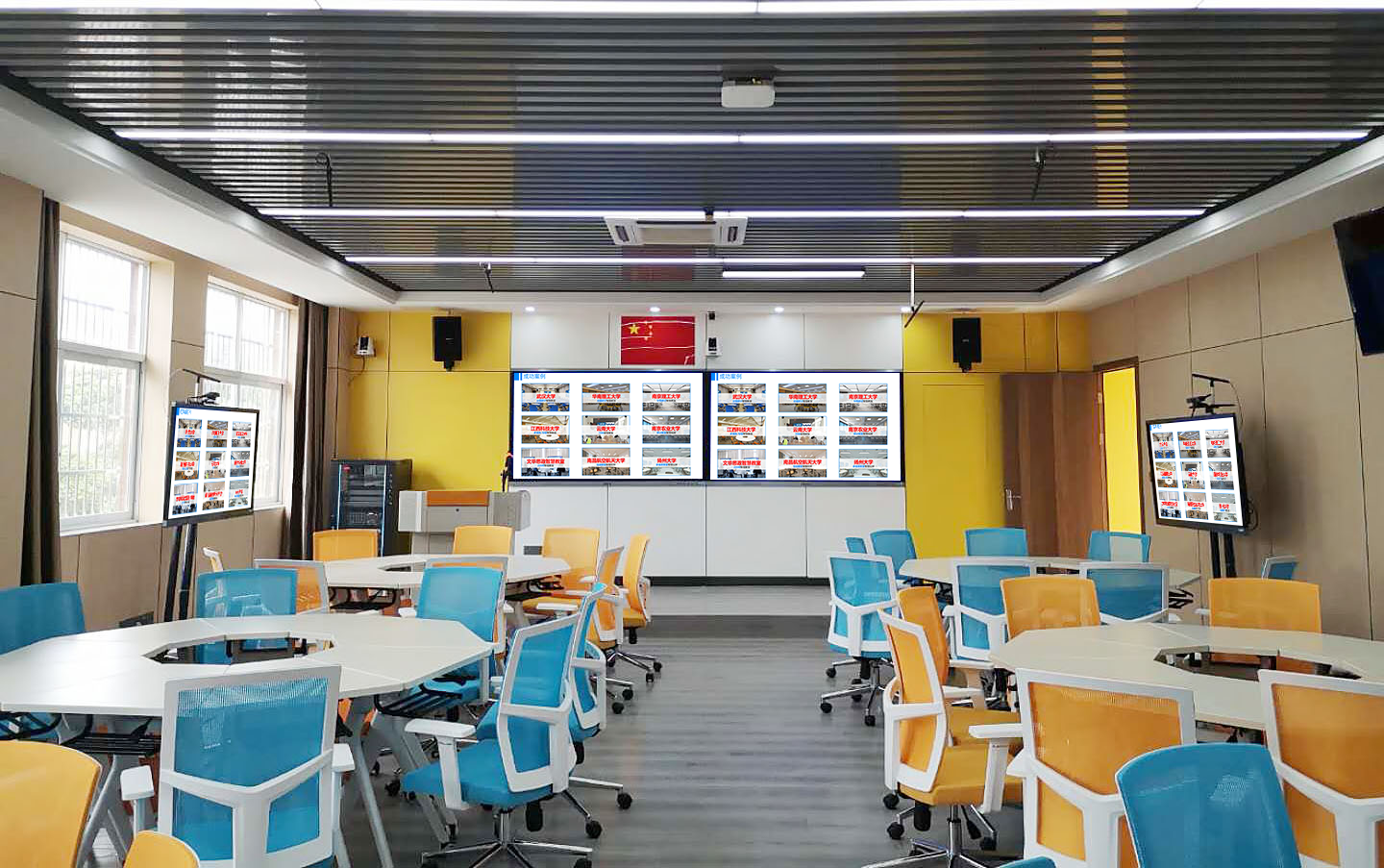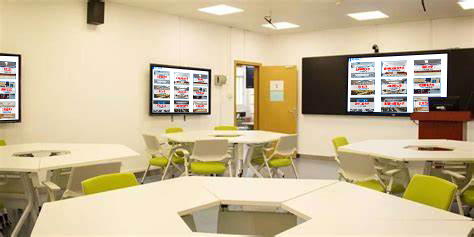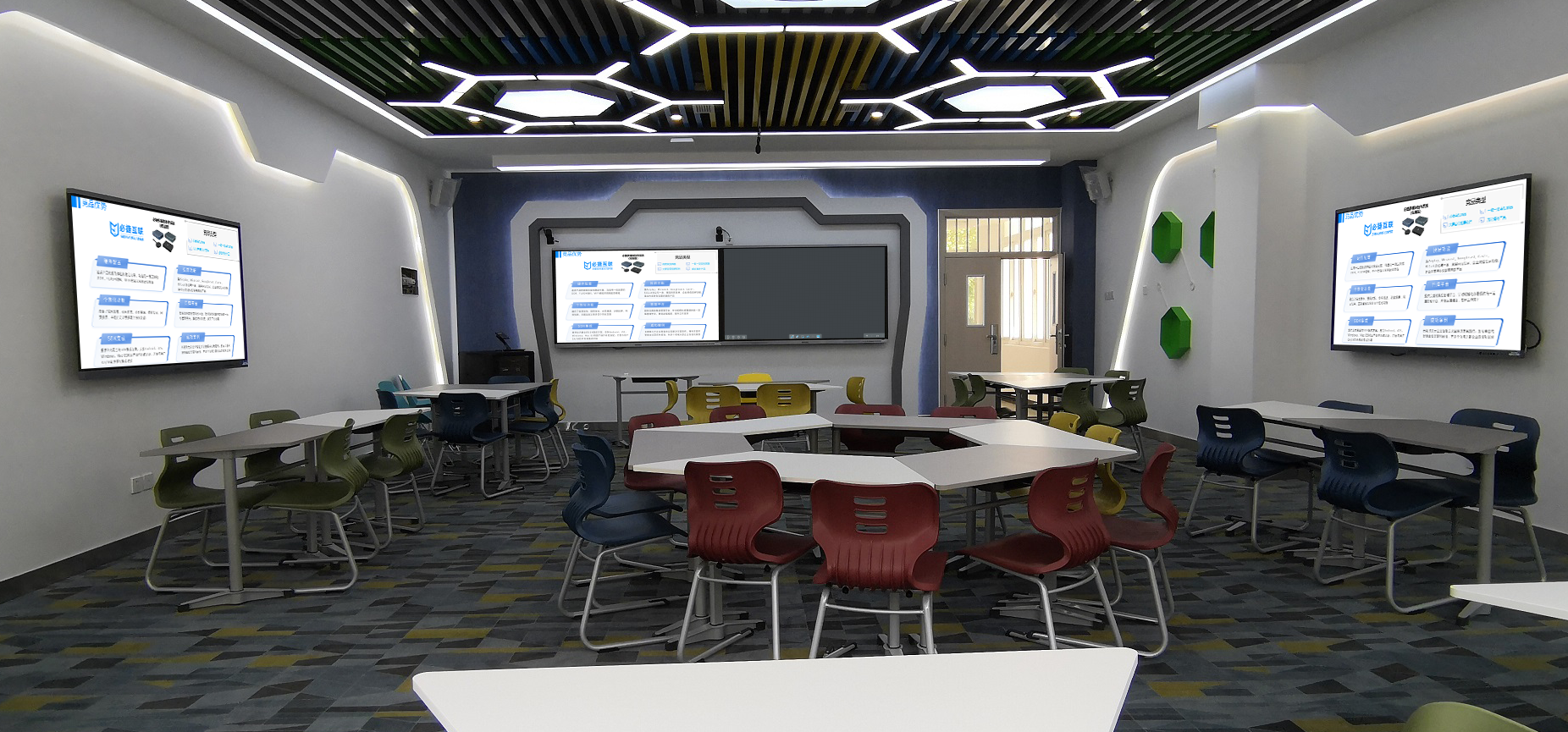Smart Classrooms: Redefining the Classroom Teaching Experience
In traditional classrooms, issues like time-consuming blackboard writing, limited interaction, and inconvenient resource transfer are gradually being resolved with the widespread adoption of smart classrooms. Through the deep integration of technology and teaching scenarios, smart classrooms make the teaching and learning process more efficient, more flexible, and more aligned with the educational needs of the new era.
Device Collaboration: Streamlining the Flow of Teaching Resources
One of the core advantages of a smart classroom is its ability to break down barriers between devices. The teacher’s computer, students’ tablets, and the classroom’s large screen form a linked network, allowing teaching resources to flow rapidly between devices.
For example, courseware prepared in advance by the teacher automatically syncs to the classroom’s large screen upon startup, eliminating manual copying. During class, students’ in-class exercises completed on tablets can be submitted with a click and instantly projected to the teacher’s terminal. The teacher can then immediately pull up typical answers to project and explain, saving time spent collecting assignments and flipping through notebooks. In experiment classes, videos of experimental phenomena filmed by students on their phones can be instantly transmitted to the big screen for the whole class to observe, making details clearly visible and discussions more targeted.
Enhanced Interaction: Transforming Classrooms from “One-Way Lecture” to “Two-Way Participation”
Smart classrooms use diverse interactive tools to shift students from “passive listening” to “active participation.” The classroom’s large screen supports touch annotation, allowing teachers to directly circle key points and write out derivation processes on the courseware during explanations. Students’ tablets can simultaneously receive these annotations, making it convenient for review at any time.
Even more flexible is the multi-person interaction function. It supports multiple student tablets simultaneously projecting their screens. After group discussions, each group’s results can be displayed on the big screen in a split-screen format, allowing all students to visually compare different ideas. For example, in a Chinese literature class analyzing a text, the mind maps drawn by each group on their tablets can be presented synchronously, encouraging everyone to share their views, creating a lively and orderly classroom atmosphere.

Adapting to Diverse Needs: Technology Serving the Essence of Teaching
Smart classrooms do not blindly pursue “stacking high-tech equipment.” Instead, they prioritize practicality and compatibility. Traditional equipment like old projectors and ordinary whiteboards can be integrated into the smart system by connecting adapter tools, eliminating the need for large-scale hardware replacement and reducing schools’ upgrade costs.
At the same time, the operation design is simple and easy to understand, allowing teachers to quickly get started without complex training. One-key activation of classroom mode, automatic recording of teaching processes, and post-class generation of classroom reports… these features enable teachers to focus more energy on teaching design rather than technical operations.
Whether it’s enhancing teaching efficiency, strengthening classroom interaction, or lowering the barrier to entry, the ultimate goal of the smart classroom is to bring technology back to the essence of education—making it easier for teachers to teach and more engaging for students to learn. When technology and teaching scenarios seamlessly merge, the classroom gains more possibilities.